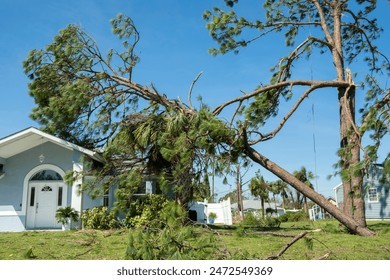
Tree Removal in Construction: Regulations, Soil Stability, and Environmental Impact in Australia
March 28, 2025
Author: Michael Safari
Why Is Tree Removal Important in Construction?
Tree removal is a critical step in site preparation for residential and commercial construction projects. Trees can impact building footprints, soil stability, and structural integrity, requiring careful assessment by structural engineers and environmental regulators.
This guide explores when tree removal is necessary, legal requirements, soil impact, and sustainable alternatives.
When Is Tree Removal Necessary for Construction?
Tree removal may be required when trees:
- Obstruct the building footprint or interfere with planned infrastructure.
- Pose safety risks by affecting foundations, walls, or underground utilities.
- Block site access, preventing heavy machinery or material transport.
- Engineering Assessment Before Tree Removal
- Structural & geotechnical engineers evaluate tree impact on soil stability.
- Root system analysis determines risks of foundation damage or soil movement.
- Site surveys help decide whether tree removal, relocation, or protection is the best option.
Tree Removal Regulations in Australia
Tree removal is governed by local council regulations and environmental protection laws. Key legal requirements include:
- Permit Requirements – Required for large trees, mature species, or heritage-listed trees.
- Native Vegetation Laws – Protects endangered species and ecosystems.
- Fines & Legal Consequences – Unauthorized removal can result in heavy penalties.
Steps to Ensure Compliance:
- Consult local council regulations before planning tree removal.
- Apply for necessary permits to avoid legal issues.
- Hire a certified arborist for expert assessment.
Ignoring permit requirements can delay construction and lead to legal complications.
How Tree Removal Affects Soil Stability & Structural Integrity
Removing trees can significantly alter soil conditions, leading to foundation and stability issues.
Key Soil Concerns After Tree Removal:
- Soil Moisture Changes – Trees absorb water, so removal increases soil moisture, leading to expansion and potential foundation movement.
- Root Decomposition – Dead roots leave voids in the soil, increasing the risk of settlement and subsidence.
- Erosion Risks – Without trees, topsoil stability decreases, potentially leading to landslides on sloped terrain.
Engineering Solutions for Soil Stability
- Compaction & soil reinforcement techniques prevent post-removal settlement.
- Retaining walls & drainage systems protect against erosion risks.
- Foundation modifications accommodate changes in soil conditions.
Proper geotechnical assessment ensures that tree removal does not compromise site stability.
Environmental Considerations for Tree Removal
Tree removal affects ecosystems, air quality, and erosion control.
Key Environmental Concerns:
- Loss of Biodiversity – Trees provide habitats for wildlife.
- Soil Erosion – Tree roots anchor the soil, preventing runoff damage.
- Reduced Air Quality – Trees absorb carbon dioxide, improving air quality.
Sustainable Approaches to Offset Tree Removal:
- Replanting Programs – Replace removed trees with new vegetation.
- Erosion Control Measures – Use mulching, ground cover plants, or terracing.
- Design Adjustments – Modify the building footprint to preserve existing trees.
Balancing construction needs with environmental sustainability reduces long-term ecological impact.
Challenges of Tree Root Removal Near Structures
Tree roots can extend under pavements, foundations, and walls, making removal complex.
Risks of Root Removal in Construction:
- Soil Destabilization – Removing roots weakens soil support under foundations.
- Pavement & Wall Damage – Root disturbance can cause cracks in structures.
- Drainage System Interference – Root removal may affect natural water flow.
Engineering Solutions:
- Use root barriers to prevent future root intrusion.
- Modify foundation designs to work around existing root systems.
- Assess alternative solutions before removing deep-rooted trees.
Proper root management minimizes damage risks to surrounding structures.
Alternatives to Tree Removal in Construction
In some cases, trees can be preserved using innovative site-planning methods.
Best Alternatives to Tree Removal:
- Tree Relocation – Transplanting valuable or protected trees to a different area.
- Adjusting Building Layouts – Modifying plans to accommodate trees on-site.
- Protective Barriers – Installing root barriers to prevent underground interference.
Preserving trees can enhance aesthetics, improve sustainability, and reduce environmental impact.
Permit Requirements for Tree Removal in Australia
Tree removal permits are typically required for:
- Trees exceeding height & canopy size limits.
- Heritage-listed or environmentally protected trees.
- Native species regulated under conservation laws.
How to Obtain a Tree Removal Permit?
- Contact your local council for tree removal guidelines & application forms.
- Hire a certified arborist to provide assessment reports.
- Follow legal procedures to avoid project delays or fines.
Understanding local tree removal laws ensures compliance and responsible land development.
Final Thoughts: Balancing Tree Removal with Sustainable Construction
Tree removal in construction projects must consider:
- Structural safety & site stability.
- Legal regulations & permit requirements.
- Environmental impact & sustainable alternatives.
By integrating tree preservation strategies, geotechnical analysis, and compliance with local regulations, construction projects can achieve both structural efficiency and environmental responsibility.
For expert tree removal assessment & engineering solutions, consulting professionals ensures a well-balanced approach to land development.
📢 Need Expert Guidance on Tree Removal & Site Preparation?
At Fundament, we specialize in geotechnical analysis, tree removal assessments, and structural engineering solutions. Contact us today to ensure safe and compliant land development!

